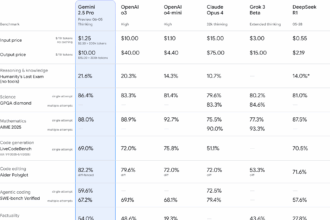Table of Contents
ToggleCybercrime Surge and the Role of AI
Cybercrime is increasing rapidly, and AI’s impact on this trend is a growing concern. Criminals already exploit digital tools, but AI introduces new challenges and opportunities in cyber attacks.
Current Cybercrime Trends
Cases of cybercrime have grown worldwide. Types include phishing, ransomware, data breaches, and identity theft. Attackers use automation and sophisticated techniques, making detection harder.
How AI Affects Cybersecurity
AI improves cybersecurity by automating threat detection and response. However, it also equips criminals with smarter methods. AI tools can create convincing fake identities or launch customized attacks quickly.
Positive AI Uses in Cybersecurity
- Real-time analysis of network traffic.
- Identifying patterns of malicious behavior.
- Automating responses to known threats.
AI-Enhanced Cybercrime Tactics
- Generating sophisticated phishing emails that bypass filters.
- Creating deepfake media for social engineering.
- Automating attacks to exploit newly discovered vulnerabilities.
Key Challenges
AI tools lower the skill needed to launch complex attacks, broadening the pool of potential cybercriminals. Rapid AI advancements outpace some defense mechanisms.
Balancing AI in Cybersecurity
Experts emphasize developing AI-powered defenses alongside regulations on AI misuse. Collaboration among governments, tech companies, and cybersecurity firms is critical.
Future Outlook
The relationship between AI and cybercrime is complex. While AI boosts defenses, it also enhances attacker capabilities. The outcome depends on how society leverages AI tools to protect digital systems.
- Cybercrime is rising globally with increased digital dependency.
- AI strengthens both cyber defenses and criminal methods.
- AI enables more sophisticated, automated cyber attacks.
- Developing AI-driven security and regulation is essential.
- Collaboration is key to managing AI’s impact on cybercrime.
Cyber Crime is Surging. Will AI Make It Worse?
Cyber crime is surging, and yes, AI could make it worse. But let’s not panic just yet. Understanding the twist AI brings to the cybercrime tale helps us prepare better—and maybe even outsmart the bad guys.
First off, cyber crime itself isn’t new. It’s been climbing steadily, much like your favorite streaming service’s subscriber count during a lockdown. What’s different now is artificial intelligence’s role in this unfolding drama. AI can sharpen cybercriminals’ tools, making attacks swift and more devastating, but it also arms defenders with better shields.
So how does AI worsen cyber crime?
AI enables hackers to automate and personalize their attacks. Instead of a generic phishing email sent to thousands, AI crafts bespoke messages that feel like they come from your best friend. Imagine spotting a scam when it looks like a chat from your boss—tricky, right?
Moreover, AI can analyze patterns and vulnerabilities faster than any human hacker ever could. It learns from every failed or successful attack and adjusts immediately. Think of it as a cybercriminal’s hyper-intelligent apprentice, ready to exploit the smallest crack in a system.
On top of that, AI-powered bots can flood networks, overload servers, or create fake accounts that spread malware or disinformation. These bots run 24/7 without a coffee break, and they get smarter every day.
AI-Powered Crime in Action
Take deepfakes, for example. These AI-generated videos or audios, where faces and voices are swapped perfectly, can manipulate public opinion or fool security systems reliant on biometrics. It’s not just sci-fi anymore; cybercriminals are already wielding this technology.
Ransomware has also grown more dangerous with AI assistance. Hackers can quickly identify which files you value most and encrypt them first, increasing pressure to pay the ransom. No one wants their entire photo gallery or client database locked away.
Even insider threats get a boost. Malicious insiders might use AI to bypass detection or mask their activities, making it harder for security teams to spot the problem until damage is done.
But Here’s the Other Side of the Coin
Before we throw AI under the bus for all cyber woes, remember it’s also a powerful defense tool. Security teams use AI to detect abnormal behavior, predict attacks before they happen, and respond faster.
It can monitor millions of data points simultaneously, which humans simply can’t handle. Real-time alerts, anomaly detection, and threat hunting automated by AI help reduce damage and shut down breaches quicker.
So, will AI make cyber crime worse? It depends. If defenders and lawmakers play catch-up, sure. But if they invest in AI and training, the digital battleground could tilt favorably toward protection.
What Can You Do to Stay Safe?
You don’t have to be a cybersecurity expert to fight back against AI-driven cybercrime. Start with simple steps:
- Strengthen your passwords. Use unique, complex ones and consider a password manager.
- Enable two-factor authentication. It’s an extra lock on your digital door.
- Be cautious with emails and messages. AI scams look real but think twice before clicking.
- Keep your software up to date. Patches fix vulnerabilities that AI bots love to exploit.
- Educate yourself and your team. Awareness is the best defense.
Why Does This Matter Today?
Cyber crime affects everyone—from individual users to global corporations. Its rise impacts financial systems, personal privacy, and national security. As AI technology advances rapidly, the stakes get higher.
Interestingly, many people are locked out of full insights on this subject due to paywalls. For example, in-depth reports from outlets like the Financial Times often require subscriptions or organizational access. Yet these reports reveal crucial trends and strategies about AI’s role in cybercrime, showing the need for wider access.
Fortunately, there are ways organizations and individuals get free or discounted access. Universities or companies might provide digital access to their people, along with special content on cyber threats. Checking whether you have such access could give you an edge.
Looking Ahead: The AI-Cybersecurity Arms Race
Picture cyber warfare as a chess match. AI acts as a new kind of player with super-fast intuition. Both sides—attackers and defenders—keep learning and upgrading their moves. The key is not who has the sharpest AI, but who uses it smartest.
Governments must craft laws to regulate AI misuse while promoting responsible innovation. Businesses need to invest in AI-powered defenses and employee training. We should all stay informed and cautious online.
Will AI make cyber crime worse? Probably in some ways, but it also provides better tools to fight back. In the end, the battle isn’t just technological—it’s human.
What’s your strategy to protect yourself against smarter cyber threats? The conversation is just getting started.
1. How does AI influence the rise in cybercrime?
AI can automate attacks, making cybercrime faster and more complex. It enables hackers to create phishing schemes and malware with little effort. This speed and scale increase the threat level.
2. Can AI improve defenses against cybercrime?
Yes, AI can detect unusual patterns and stop attacks quickly. Security systems use AI to analyze data and respond to threats in real-time. This helps reduce damage from cyber attacks.
3. Are AI-driven cyber attacks harder to detect?
Yes, AI tools can mimic legitimate behavior and bypass traditional security checks. They adapt during attacks, making them tougher to spot. This makes defense more challenging.
4. Will AI cause new types of cybercrime?
AI may lead to new crimes like deepfake scams and automated vulnerability exploits. These methods trick people and systems in novel ways. Cybercriminals keep evolving their tactics.
5. What can individuals do to protect against AI-powered cyber threats?
- Keep software updated.
- Use strong passwords and two-factor authentication.
- Be cautious with unexpected messages or links.
Taking these steps reduces risk from smarter attacks.





